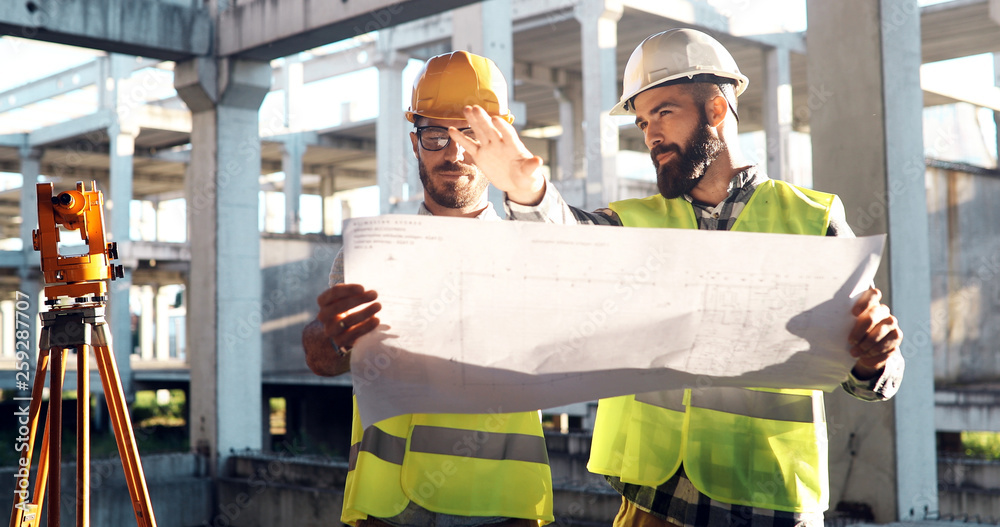When you walk past a stunning skyscraper or step inside a beautifully designed museum, you’re not just witnessing one person's vision—you’re seeing the result of collaboration between architects and engineers. These two roles are often seen as separate, even opposing. But in reality, their partnership is what brings complex structures to life. Let’s explore how architects and engineers work together, where their roles intersect, and why both are vital to building the world around us. Architects and Engineers: What’s the Difference? First, let’s clarify what each professional brings to the table. Architects are the visionaries. They focus on aesthetics, functionality, and how people will experience a space. Their work often begins with design concepts, client needs, and artistic vision. Engineers, on the other hand, are the problem-solvers. They focus on practicality, safety, and performance. They make sure the architect’s ideas can stand up—literally—and comply with structural, electrical, and mechanical standards. Two Sides of the Same Coin Despite their differences, architects and engineers are really two sides of the same coin. While one dreams up a breathtaking cantilevered roof, the other calculates whether it can withstand wind loads or seismic forces. Neither profession can succeed on its own in large, complex builds. Where Collaboration Begins The collaboration starts early—often in the conceptual phase. Architects typically present initial sketches, floor plans, and renderings. Engineers are brought in to assess the feasibility and refine the design from a technical point of view. This early communication helps avoid delays, budget overruns, or design revisions …
Architects vs. Engineers: Collaborating on Complex Structures

When you walk past a stunning skyscraper or step inside a beautifully designed museum, you’re not just witnessing one person’s vision—you’re seeing the result of collaboration between architects and engineers.
These two roles are often seen as separate, even opposing. But in reality, their partnership is what brings complex structures to life.
Let’s explore how architects and engineers work together, where their roles intersect, and why both are vital to building the world around us.
Architects and Engineers: What’s the Difference?
First, let’s clarify what each professional brings to the table.
Architects are the visionaries. They focus on aesthetics, functionality, and how people will experience a space. Their work often begins with design concepts, client needs, and artistic vision.
Engineers, on the other hand, are the problem-solvers. They focus on practicality, safety, and performance. They make sure the architect’s ideas can stand up—literally—and comply with structural, electrical, and mechanical standards.
Two Sides of the Same Coin
Despite their differences, architects and engineers are really two sides of the same coin.
While one dreams up a breathtaking cantilevered roof, the other calculates whether it can withstand wind loads or seismic forces.
Neither profession can succeed on its own in large, complex builds.
Where Collaboration Begins
The collaboration starts early—often in the conceptual phase.
Architects typically present initial sketches, floor plans, and renderings. Engineers are brought in to assess the feasibility and refine the design from a technical point of view.
This early communication helps avoid delays, budget overruns, or design revisions down the road.
Design Development: Give and Take
As the project develops, architects and engineers engage in a constant back-and-forth exchange.
The architect might want a column-free interior for an open floor plan. The structural engineer needs to find a way to support the roof without those columns.
Together, they brainstorm solutions like using steel trusses or post-tensioned slabs.
It’s a creative partnership—engineers helping architects push boundaries, and architects inspiring engineers to innovate.
Types of Engineers in Construction
Not all engineers on a project are structural. Here’s a quick overview of who might be involved:
- Structural Engineers – Ensure the building’s framework is safe and strong.
- Mechanical Engineers – Design HVAC, plumbing, and mechanical systems.
- Electrical Engineers – Handle lighting, wiring, and power needs.
- Civil Engineers – Focus on site layout, drainage, roads, and infrastructure.
- Environmental Engineers – Help with sustainability, water use, and pollution controls.
Each plays a role in shaping a building’s performance and environmental impact.
Also Read: Top 10 Architecture Firms in India
A Real-World Example: The Sydney Opera House
One of the most iconic buildings in the world, the Sydney Opera House, shows just how intense collaboration can be.
The architect, Jørn Utzon, designed its now-famous sail-like shells without initially knowing how they’d be built.
It took years of input from structural engineers like Ove Arup to figure it out. They eventually devised a solution using a sphere’s geometry—revolutionary at the time.
Without that joint effort, the Opera House might never have become the landmark it is today.
Common Challenges in Collaboration
Even with the best intentions, collaboration isn’t always smooth.
- Communication gaps: Jargon and priorities differ.
- Design conflicts: What’s elegant to an architect may be inefficient to an engineer.
- Budget constraints: Engineers often have to value-engineer ideas that go over budget.
- Timeline pressures: Rushed schedules can limit creative problem-solving.
The key is mutual respect and consistent communication throughout the project lifecycle.
Technology Bridging the Gap

Modern tools have dramatically improved collaboration between architects and engineers.
BIM (Building Information Modeling) platforms like Revit or ArchiCAD allow both parties to work on the same 3D model, seeing real-time impacts of design changes.
These digital models reduce errors, identify clashes, and support smoother coordination between disciplines.
Sustainability: A Shared Mission
Green building design has brought architects and engineers closer than ever.
Sustainable structures require integrated systems thinking—from passive solar design to energy-efficient HVAC and water recycling.
Engineers ensure those features perform well, while architects make them seamless and beautiful.
Think of it as a joint mission toward a more responsible, resilient future.
The Role of Project Managers
In complex projects, a third role often emerges as the glue: the project manager.
They coordinate meetings, track progress, handle budgets, and make sure everyone stays aligned.
While not designing or calculating, they play a crucial part in maintaining synergy across teams.
How Architects Influence Engineers

Architects inspire engineers to push limits—whether it’s designing a twisting tower, a floating staircase, or a building that blends with the landscape.
They ask questions like “what if we could…?” and challenge norms.
In turn, engineers innovate new materials, develop advanced modeling tools, and sometimes even invent entirely new systems to make it possible.
How Engineers Shape Architects’ Vision
Engineers, meanwhile, ground architects in reality—ensuring that beauty doesn’t come at the cost of safety or performance.
They calculate wind forces, analyze load paths, simulate fire safety, and provide the critical infrastructure behind the curtain.
Good engineers also propose alternatives that can achieve the same design effect in more practical or sustainable ways.
Case Study: The Burj Khalifa

The Burj Khalifa in Dubai—the tallest building in the world—required extraordinary coordination.
Architects at Skidmore, Owings & Merrill worked with structural engineers to design the Y-shaped floor plan for stability in high winds.
They used a “buttressed core” system and cutting-edge materials to achieve the soaring height.
Without seamless collaboration, it would have remained just a vision on paper.
Education and Training: Different Paths
Architects typically study design, art, spatial planning, and history. Their education emphasizes creativity and user experience.
Engineers study physics, math, and technical design. Their focus is precision and performance.
Though they learn different things, both professions now receive more cross-disciplinary exposure to foster better collaboration.
Soft Skills Matter Too
On top of technical skills, communication, teamwork, and empathy are crucial for architects and engineers alike.
Understanding each other’s language and respecting each other’s role helps prevent friction and builds stronger project teams.
Great buildings emerge not from solo geniuses—but from shared understanding.
When Collaboration Fails
Sometimes, the architect-engineer relationship breaks down.
That’s when you get:
- Over-budget projects
- Missed deadlines
- Finger-pointing in case of failures
- Buildings that “look great” but function poorly—or vice versa
Avoiding this comes down to early integration, clear roles, and continuous feedback.
Integrated Design Approach: The Future
The future of building design is integration.
Rather than handing off drawings from one department to the next, many firms now work in multidisciplinary teams from day one.
This leads to faster decisions, better coordination, and ultimately more successful outcomes.
Collaboration isn’t just helpful—it’s essential.
A Matter of Perspective
In the end, architects and engineers look at the same building from different lenses.
One sees how it looks and feels; the other sees how it stands and performs.
But when these perspectives align, the results can be breathtaking—function meeting form in perfect harmony.
Why This Partnership Matters
Whether you’re constructing a hospital, a bridge, or a high-rise, the combined efforts of architects and engineers directly impact people’s lives.
Their collaboration determines:
- Safety and resilience
- Comfort and usability
- Aesthetic and cultural value
- Energy use and environmental footprint
It’s more than design—it’s shaping how people live, work, and connect with the built environment.
Final Thoughts
Architects and engineers may come from different worlds, but their collaboration is the heartbeat of the built environment.
When they work together well, incredible things happen—innovative, sustainable, and awe-inspiring structures that stand the test of time.
So next time you admire a building, take a moment to appreciate both the dreamers and the doers behind it.
Let’s Celebrate the Collaboration
Are you an architect or an engineer? Or maybe a student aspiring to join the industry?
Remember this: the best results don’t come from one genius in a room—but from a team of passionate professionals working together.
Celebrate the collaboration. That’s how we build the future.


